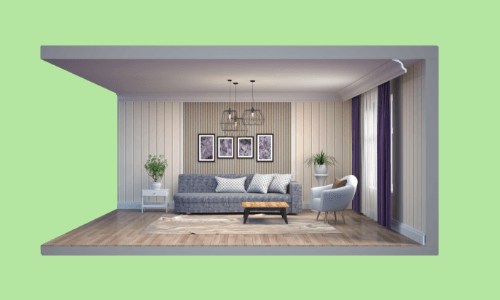
How an interior design course can improve your market value
Interior designing has turned into a much-pursued profession in recent times. However, do not be fooled; you must be willing to put continuous effort and hard work into your craft. Interior design is a challenging job, and if you sincerely want to make it, you must pour your heart and soul into your profession.
Hopeful interior designers are enlisting themselves in courses to give their professions a lift and increment their work possibilities. Are you afraid there are some skills you do not have at present? The good news is it is never too late to learn!
If you are seeking an interior design career, make sure you have your bachelor’s or master’s degree and have signed up for design programs. Or if you want to figure out if this is for you or if you are just entering the interior design field, whether with your own home or working with another homeowner, sign up for the Diploma in Interior Design at Upskillist to make sure you are skilled to make the best decision!
What is interior design?
Interior design is the art or process of designing the interior decoration of a room or building. It enhances the interior of a building to achieve a healthier and more aesthetically pleasing environment for the people using the space.
An interior designer is someone who plans, researches, coordinates, and manages such enhancement projects. Interior design is a multifaceted profession that includes conceptual development, space planning, site inspections, programming, research, communicating with the stakeholders of a project, construction management, and execution of the design.
Types of interior design
The types and styles of interior design are many. It is really very difficult to discuss all in a single blog. We have identified some very important and popular varieties of interior designing are discussed below:
- Nautical interior design style
- Contemporary interior design style
- Traditional interior design style
- Modern style of interior design
- Industrial interior design style
- Minimalist interior design style
- Mediterranean Interior design style
- Mid-century modern interior design style
- Eclectic interior design style
- Beach-style interior design
1. Nautical interior design style
This type of design inside your home will depict a cheerful wave. You will get an image of a warm and relaxing view. The nautical décor has examples from cottage or coastal style décor. Normally, the designers use the foundation of sand colour or white colour. The experts also put a touch of blue. Since the theme is coastal, the decorative materials used here are jute ropes, sailboats, seashells in clear jars, navigation maps etc. The designer uses wood in unfinished form to bring a natural view.
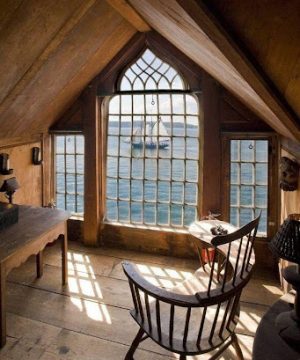
2. Contemporary interior design style
Some people think the modern style is contemporary. But, in reality, both styles are quite different from one another. But the designers use both modern and contemporary styles in an interchangeable pattern. The contemporary designs are more fluidic in nature. Thus, this can be altered as per the interest of the seeker.
Elements in contemporary design:
- Natural light is used
- It includes open spaces
- Use of natural and textural fabrics
- Either very dark or very light wood tones
- Neutral colours
- It uses metal accent pieces
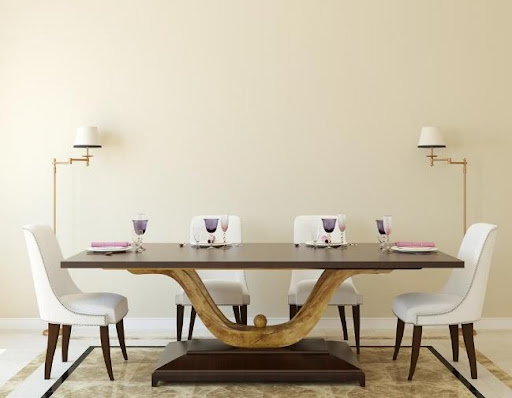
3. Traditional interior design style
Here the design has a touch of our old classic. The use of wooden furniture by traditional craftsmen is one of its elements. The style is also known as the old-school European style.
Elements in traditional design:
- Here the interiors include wood panelling and moulding with elaboration
- This brings out the beauty of classic European décor
- Antique pieces are used in designing
- The tiles used over here are of velvet or silk touch
- The colours used are sober and classy
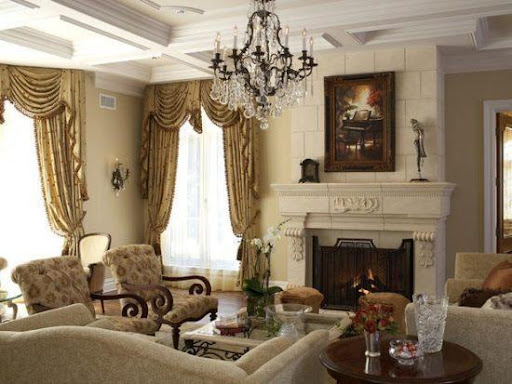
4. Modern interior design style
The clean and crisp lines over your home designs will depict the modern style. The materials used in this type of design are mostly glass and steel. This looks simple yet very beautiful. You will get a new and fresh look with the entire décor. The sleek and unique design of furniture can win over the hearts of many people looking for a change.
Elements in modern interior design:
- Bold colour contrasts or neutral with primary colours
- Plain area rugs or geometric pattern
- Open floor plans
- Furniture will be of clean lines with smooth and sleek surface
- Asymmetric design made with intention
- Getting an artistic look with accessories
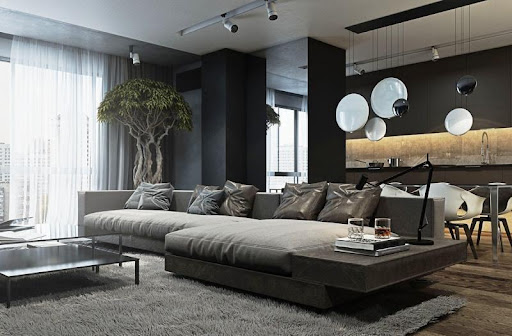
5. Industrial interior design style
As the name suggests, this type of design stems from a factory, warehouse or something related to it. The designer doesn’t need to make it like the home or office interiors. There must be a sense of unfinishedness and rawness within the looks of the interior design. It will give a presentation of the exposed brick.
Elements in industrial interior design:
- This must have a high ceiling
- The designer can use old timber to build its interiors
- The metal fixtures can be used inside
- Putting abstract art inside can be an idea
- The neutral colour scheme will be ideal here
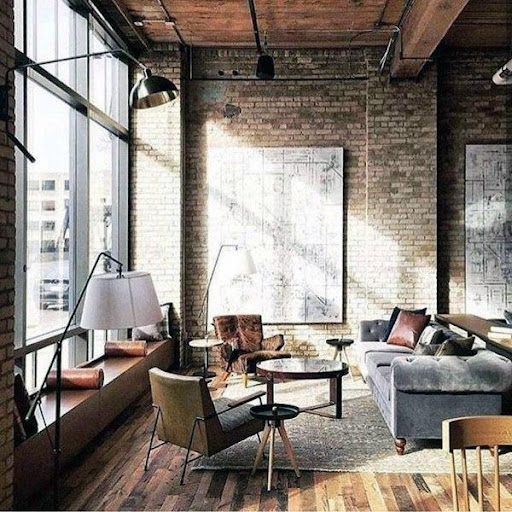
6. Minimalist interior design style
This is one of the latest interior designs that come with very minimum accessories and fixtures inside. Here you will get a view of the clean elegance of your interiors. There will be no fuss at all. The design is for all those people who like the essence of simplicity.
Elements in minimalist interior design:
- The interiors should be simple
- No vibrant colours or prints are used
- The furniture inside the room is bare minimum
- The space inside must be enough to make the atmosphere airy
- Interiors inside must be drawn and placed with ultra-clean lines
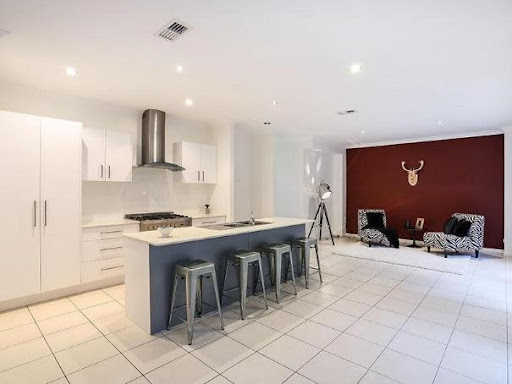
7. Mediterranean interior design style
This type of interior design is quite uncommon in nature. Few people adopt this style at home. This design requires a lot of space. Also, the curves and design make the interior look small from the inside. This comes with plenty of ornamental styles. You can find a wide range of columns and arches here.
Elements of Mediterranean interior design:
- Brick and tile
- Columns
- Arches
- Large balconies within the interiors
- Earth tones
- Limitless curves
- Large furniture

8. Mid Century Modern interior design style
This type of interior design was quite popular in the mid of 1900s. The unique look of the interiors has an iconic view. People can see the natural shapes and figurines inside the home interiors of such designs. The creation of the interiors has been inspired by the Eames, Saarien, Jacobsen, Noguchi, and Niemeyer ages.
Elements of Mid-Century Modern interior design:
- Moulded plastics are used in the interiors
- The use of aluminium and plywood was quite popular
- It is sparsely furnished
- Clean lines within the interiors are viewed
- Organic styles can be viewed
- A retro Danish-inspired finish is here

9. Eclectic interior design style
The eclectic interior design is all about energy. Modern furnishing and a spellbinding look combined with high energy to bring out this eclectic design. The interiors inside this style have bold colour palettes, patterns as well as textures. This has a rich mix to make it inspiring. This design is very popular with youngsters.
Elements of eclectic interior design:
- This comes with high energy décor
- Any type of creativity with freedom
- Bright colours are used in the interiors
- Mixing of old and new styles
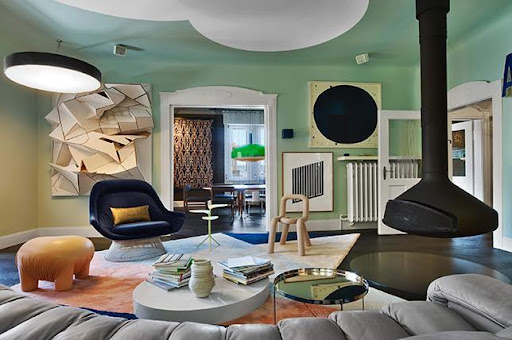
10. Beach-style interior design
You can now get the feel of the beach right inside your home. The main element of the style is painting with light colour. Make it totally white in colour. A touch of turquoise colour will make it look very attractive. Some stones and beachside décor can be placed inside the interior.
Elements of beachside decor:
- The backdrop is painted in white colour
- Surf and shells must be one of its elements
- It should be light and breezy
- Big windows to get an open feel and possible sea view
- A natural oak frame is used

Also Read: How to Become an Interior Designer
Starting a career in interior design
To start a profession in interior design, specialised information with a degree or certificate, alongside inventive abilities is an absolute necessity. If you are interested in starting a career in interior design, have a look at this list to make sure you got what it takes!
1. Creativity and attention to detail
Creativity is one of the most important skills for an interior designer. You need to be up to date with the latest trends and popular styles, understand how different spaces can be used, but also be able to come up with exciting and innovative ideas. It’s essential that you can take on board your client’s requirements but also get creative and come up with a design that exceeds their expectations.
You also need to have a good idea for detail and understand colours, textures, and how to add finishing touches that can bring the space together. You should have a good general knowledge of popular interior styles such as:
- Modern
- Contemporary
- Minimalist
- Industrial
- Mid-century Modern
- Scandinavian
- Traditional
Follow relevant industry publications and blogs and get to know some of the common products and materials that you’ll be working with. Get to know different furniture styles and materials, understand types of paint and finishes, know when to use wallpaper and where to find quality wallpaper to make a feature wall, or how to put together a gallery wall.
You need to be full of ideas, have the knowledge to put your plans together and present them effectively to your clients.
2. Learn how to communicate well
As an interior designer, you’ll need to know how to effectively communicate with clients and adjust your style to their personalities. You’ll also have to communicate your ideas to vendors and contractors, so you’ll need good communication skills. Good communication skills are critical in all aspects of the profession. Learning to convey your vision to different people effectively is crucial. You’ll need to know how to adapt your working style to fit a variety of personalities.
3. Stay current
Keeping up with the latest trends in interior design is essential for keeping your career fresh. You’ll need to have a broad knowledge of colours and styles. This will help you to meet the needs of a variety of clients. Moreover, you’ll have to have a good understanding of different types of personalities and styles. In this way, you’ll be able to adapt your work style to suit different personalities.
4. Be curious
The process of designing a home is often unpredictable. Despite the best intentions, the right inspiration can lead to unexpected results. For example, a designer might have previously been a restaurant manager, but now she’s an interior designer. In addition to curiosity, she also suggests bringing inspiration from other fields. Having a diverse skill set will give you a competitive edge.
5. Design and technology
To share your ideas and design plans with clients you’ll need to be able to draw them up. You can produce quick hand-drawn sketches for the initial stages to quickly demonstrate your ideas. But you’ll also need to be able to use computer-aided design (CAD) software to produce visual representations of what you want to do with a space.
This will allow your clients to get a clear idea of exactly what you are going to be doing so they can give you feedback before you get started. Some of the most popular software options for CAD are:
- Vectorworks
- AutoCAD
- Sketchup
They are all fairly similar to use, so if you can gain some experience using one then you’ll be able to use other similar software if you should need to.
Technology is rapidly evolving, and designers have multiple opportunities to use tech and improve their skills at work. From creating 3D renderings to adopting ‘Building information modelling’, interior designers need to integrate technology into their work.
Besides, they must know how to make collaborative and cohesive designs using the latest tech. If you are looking to improve your skills or learn new software to make your interior design job easier, sign up for a free trial on a design program or app.
6. Know the history of design
As an interior designer, your clients will expect you to know everything about style and its various forms. Clients will test your knowledge, whether art decor or sleek modern architecture, especially if they know what they want.
What if your client wants you to emulate a traditional design in a modern way? Knowing the history of specific art styles and designs can come in handy. After all, you will understand a subject thoroughly only if you know its foundation.
7. Setup a code of ethics and agreements
For some people, this is too harsh, and they come to their own agreement. That is your business. But I have learned that someone may seem like the most reasonable and thoughtful person in the world until you accidentally break their favourite coffee mug, and then all bets are off. With that said, the agreement is a portfolio that needs to be put together for each job.
There will be a copy of the laws and codes pertaining to the work in that area. If there are any permits required, there will be a copy.
There will be an agreement on the expectations, price, insurance, and any other consideration. This agreement will be left with the business.
Conclusion
To summarise, it is very clear that an interior design course can assist you with expanding your estimated worth by giving you more vocational choices to pick from. A business considers a certificate or degree-holder as a significant resource and values their range of abilities and specialised information.


